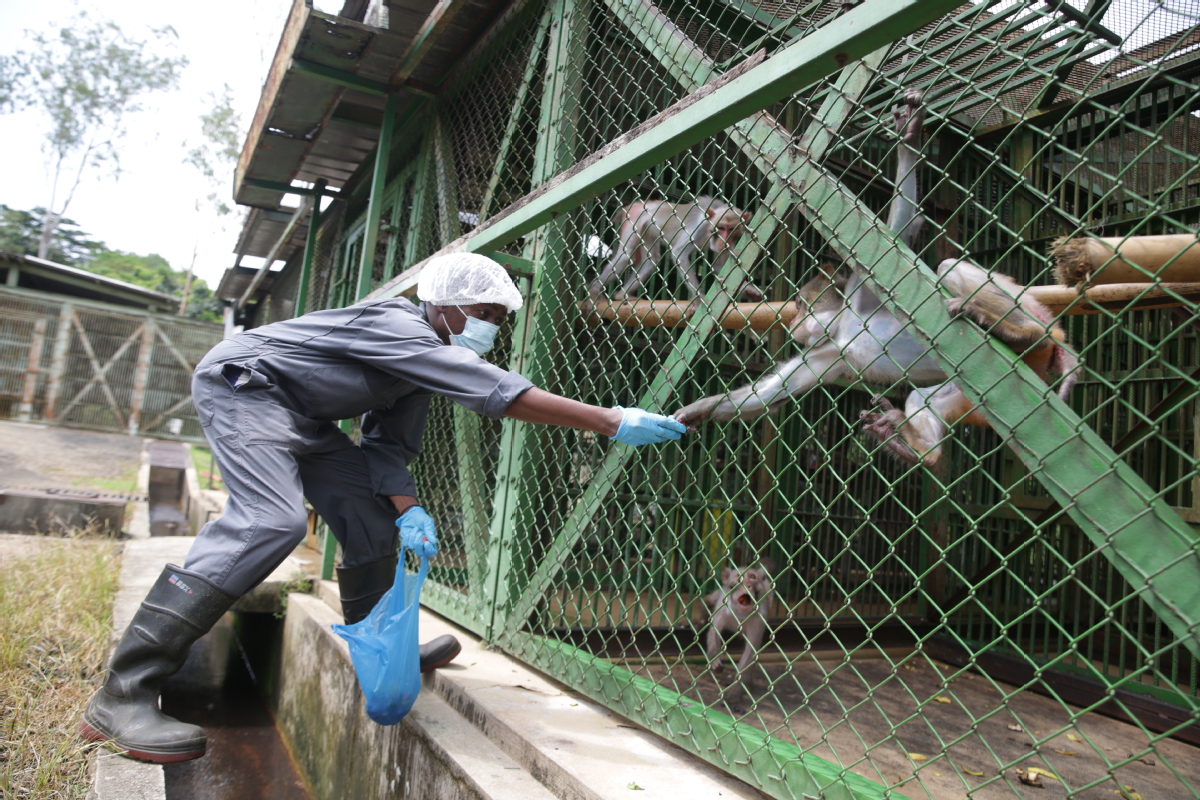Hunters on trail of next virus scour Africa forest
China Daily | Updated: 2020-12-24 09:14

ZADIE CAVES, Gabon-The scene looks like something out of a science-fiction movie, or maybe some dystopian TV series.
Six men in yellow biohazard suits clamber in suffocating heat toward a cave in the heart of the Gabonese jungle.
Their quest: to unlock new knowledge on how pathogens like coronavirus leap the species barrier to humans. In the cave is their goal-a colony of bats.
"Our job is to look for pathogens which could endanger humans and understand how transmission happens between species," explained Gael Maganga, a professor at the University of Franceville.
Bats can be hosts to viruses that do not harm them but can be dangerous to humans beings, often crossing through other animals.
COVID-19 is just the latest microbe believed to have taken the zoonotic path from animals to humans.
It notably follows three other respiratory viruses: MERS in 2012, SARS in 2003 and H5N1 flu in 1997. Then there is the Ebola virus and HIV, which is believed to have crossed over from chimps about a century ago, possibly through hunters who handled infected meat.
Getting to the cave in the West African forest is hard work.
The team have to almost wade through thick soil, pieces of bark and russet-colored leaves that exhale the musky perfume of the forest. The environment, hot and humid and filled with natural hazards, is tough for humans but perfect for viruses.
The team takes out sterile swabs and take samples from the bats' mouths and rectums. These are then taken back to the lab to be checked for any emerging pathogen.
To any who would blame the bats for the catastrophe of coronavirus, the scientists are bluntly dismissive.
Human encroachment on their habitat, they say, has brought the two mammal species into closer, riskier proximity.
"Human behavior is often the cause of an emerging virus," Maganga said. "Today, with population pressure, intensified farming or hunting, contact between humans and animals is more and more frequent."
Maganga is also co-director of the Emerging Viral Diseases Unit at Franceville's Interdisciplinary Centre for Medical Research, or CIRMF. It hosts one of Africa's two P4 laboratories-ultra-high-risk labs that operate at top levels of security.
Emerging diseases
A report issued in October by the UN's biodiversity panel IPBES said there were up to 850,000 viruses that exist in animals and may infect humans.
Seventy percent of emerging diseases circulate in animals before jumping to humans, and each year around five new diseases break out among humans, it said.
Pauline Grentzinger, a vet at the Lekedi Nature Park, a biodiversity haven near Franceville, warned against the conventional thinking "that it's humans on one side and animals on the other".
"In health terms, what happens with one (species) has a repercussion on the other. To protect natural fauna is to protect humans," she said.
In Gabon, every outbreak of Ebola has occurred in the Zadie Caves area. CIRMF researchers have found samples of the Ebola virus among bats, confirming that the flying mammals were the host.
Agencies via Xinhua






















